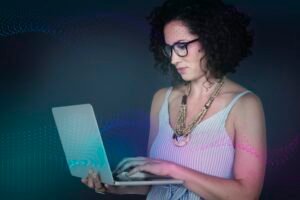Why Local LLMs Struggle With Performance
Deploying large language models (LLMs) on-premises—within your own servers or private cloud—has become an increasingly popular approach for organizations prioritizing:
Data security & compliance
Full control over infrastructure
Customization of model behavior
However, this control comes at a price:
performance bottlenecks.
Common challenges include:
High inference latency: Slow response times due to limited hardware resources compared to hyperscale cloud infrastructure.
Low throughput: Difficulty processing concurrent requests without delays.
Resource exhaustion: Memory and GPU/CPU bottlenecks on finite on-prem hardware.
Complex scaling: Adding more capacity isn’t always automatic or cost-efficient.
Fortunately, there are proven strategies and frameworks to overcome these issues without sacrificing your control and privacy.

Key Strategies to Improve On-Prem LLM Performance
Below are three approaches you can combine to achieve production-grade performance:
Choose Lightweight and Optimized Frameworks
Framework selection matters.
Two of the most widely adopted solutions for efficient on-prem inference are:
✅ Llama.cpp
Portable, written in C++, works well even on CPUs.
Minimal dependencies—good for edge and constrained environments.
Supports quantized models (smaller memory footprint).
✅ vLLM
Built for GPU acceleration and fast token generation.
Implements PagedAttention and Tensor Parallelism for higher throughput.
Easier to scale across multiple GPUs.
When to use which?
Llama.cpp: If your infrastructure is CPU-heavy or you need maximum portability.
vLLM: If you have modern GPUs and need maximum speed.
Optimize Inference Batching and Parallelism
Even with a fast framework, inference can choke without batching and concurrency tuning.
Dynamic Batching:
Collects multiple inference requests and processes them as a single batch.
Reduces overhead per request.
Increases GPU utilization.
Configurable via parameters like:
Max batch delay (ms): how long to wait for more requests.
Batch size target/limit: how many requests to group together.
Tensor Parallelism:
Especially useful with vLLM.
Splits computation across multiple GPUs.
Yields faster token generation and higher throughput.
Tip: Monitor how batch sizes and delays impact latency. For user-facing applications, smaller batch delays may be preferable.
Implement Autoscaling Policies
Unlike managed services, on-prem deployments need custom scaling logic.
Autoscaling Concepts:
Scale-up triggers: E.g., when request queues exceed thresholds.
Scale-down triggers: Releasing resources when traffic drops.
Replica autoscaling: Adjusts the number of model server instances dynamically.
Example Configuration (conceptual):
| Metric | Scale-Up Action | Scale-Down Action |
|---|---|---|
| Queue depth > 10 reqs | Start 1 more replica | — |
| GPU utilization > 80% | Add 1 GPU-enabled container | — |
| Queue depth < 2 reqs | — | Stop 1 replica |
Benefits:
Sustained low latency under load.
No manual intervention to provision resources.
Optimized cost efficiency.
Example: Deploying a Custom LLM with vLLM
Here is a simplified example workflow to get you started:
# Install vLLM
!pip install vllm
# Load the model
from vllm import LLM
llm = LLM(model="TheBloke/Llama-3-8B-Instruct-GPTQ")
# Generate text
prompt = "Explain the benefits of local LLMs."
output = llm.generate(prompt, max_tokens=200)
print(output)
🔧 Tip: Use quantized models like GPTQ for smaller memory requirements.
Best Practices Checklist
Before you go live, review this list:
✅ Benchmark latency and throughput on your target hardware.
✅ Quantize or prune your models to reduce resource usage.
✅ Implement dynamic batching with conservative latency thresholds.
✅ Set autoscaling triggers based on real workload patterns.
✅ Log all inference times and resource utilization for continuous tuning.
Further Resources
Ready to Take Control?
Building performant on-premises LLM services requires careful design, modern frameworks, and continuous optimization. When done right, you can enjoy the best of both worlds:
🔐 Full control and privacy
⚡ Production-grade performance
If you’d like help assessing your infrastructure readiness or designing an optimized on-prem LLM stack, contact our AI consulting team to get started.



